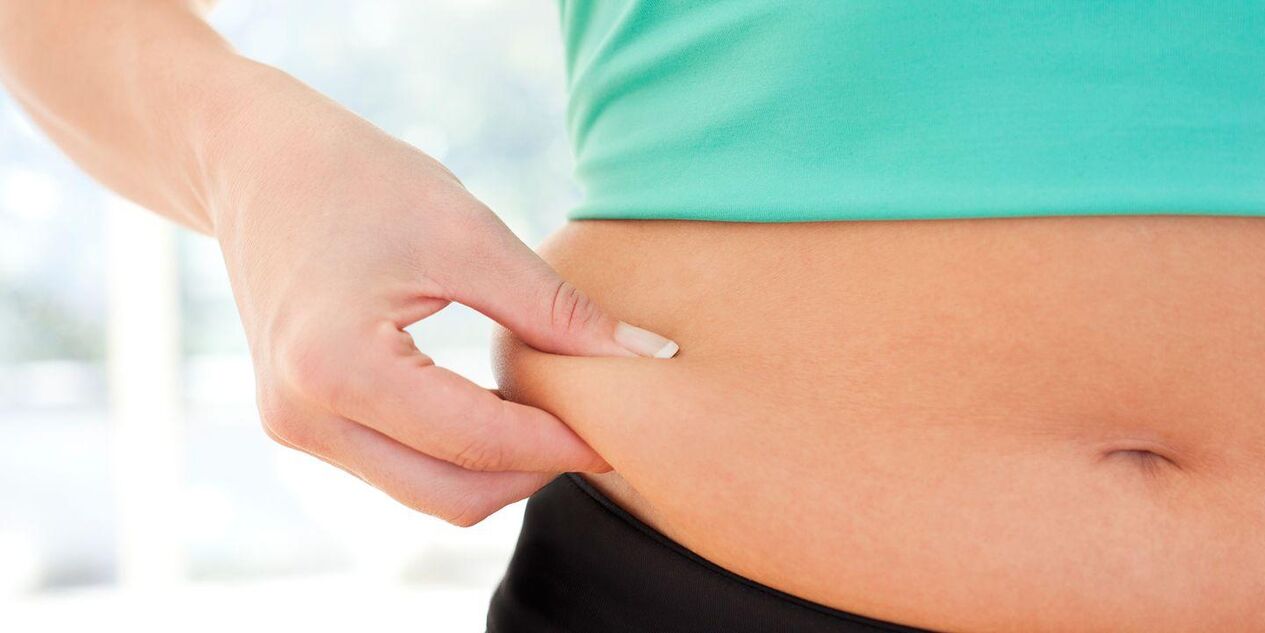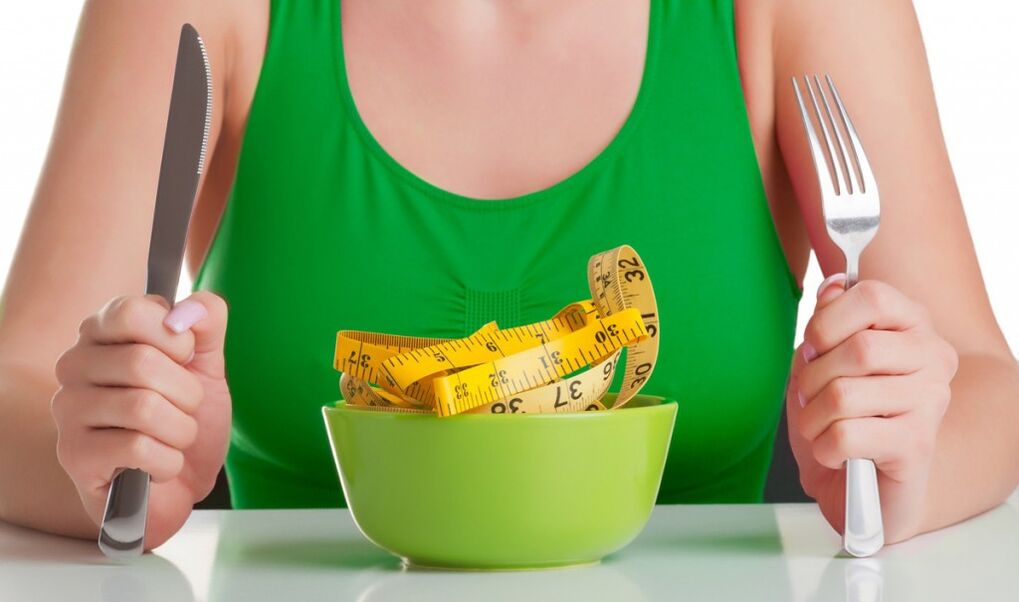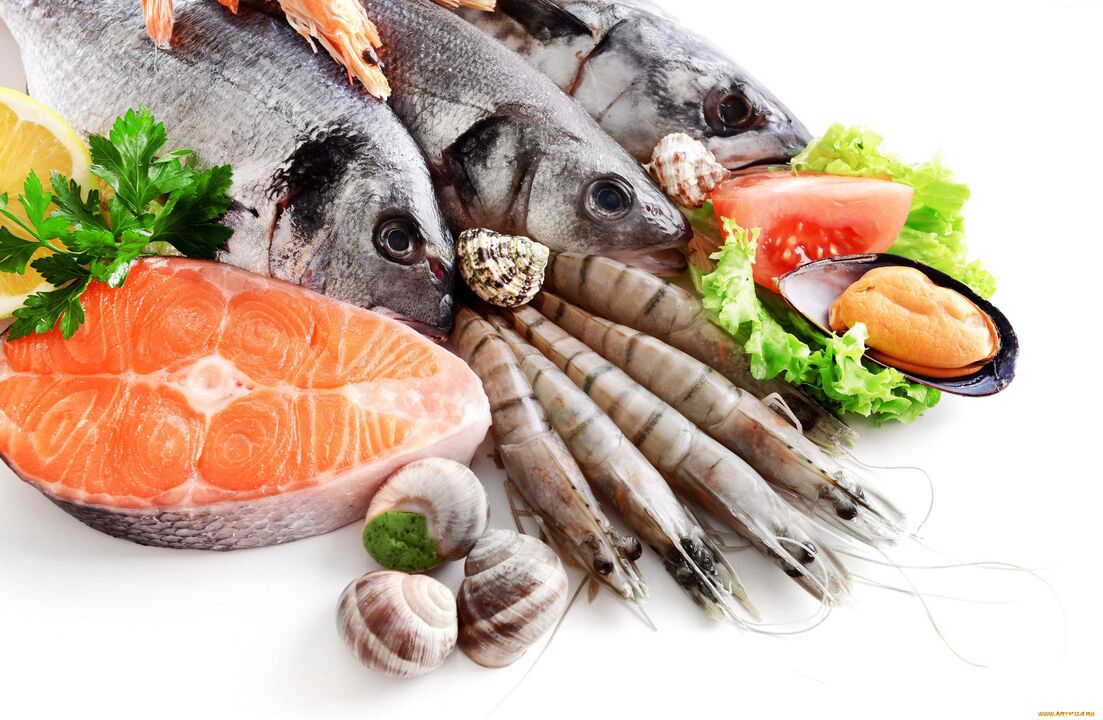There are plenty of stories online about how intensive training helped you lose 3kg in a week. This is indeed possible for an athlete who knows his body and how it responds to physical activity. However, even in this case, only 50% of the loss is fat. The rest is water, which is excreted along with the glycogen that accumulates in the muscles.

It's also important to note that with the fluid and building elements of the fat layer, the toxins and muscle mass gradually disappear. The first is excreted from the body after cleansing -- that is, if we stop eating everything in a row. The second will disappear due to improper weight loss. It is in your best interest to prevent this, as the consequences of burning muscle tissue are weakness and a slow metabolism. And the slower our metabolism, the less we lose.
keep cool
We found out how many kilos you can lose each month - this is around 4, 000 - 5, 000 grams and sometimes up to 7, 000 grams. But if you've been under stress, you won't be able to get rid of them. Scientists have shown that strong emotions slow down fat loss by promoting the intensive production of cortisol and pregnenolone, the hormones that cause excess weight and water retention in the body. what to do? Ditch fasting and other aggressive methods that lead to nervous breakdowns, go back to your old training, and find ways to really help your negativity—whether it's meditation, yoga, or Latin American dance.
No problem losing weight monthly weight loss rate is 4 to 7 kg. This metric depends on many factors:
- gender;
- age;
- weight;
- the presence of chronic diseases;
- other features of the body.
Yes, the number is not as large as many of us would like, but it is this slow and reliable weight loss that will help cement results and avoid health problems.
Physical exercise
According to the American Heart Association, for a healthy lifestyle, adults should do the following exercise or physical activity each week:
- At least 150 minutes of moderate-intensity aerobic activity per week, or 75 minutes of vigorous-intensity aerobic activity per week, or a combination of both during the week
- Moderate- or vigorous-intensity muscle-strengthening or weight training at least 2 days per week
- Those who are able should do 300 minutes of moderate-intensity aerobic activity per week
Also, it is important to avoid prolonged sitting.
For children, the AHA recommends the following:
- Parents and guardians should give young children ages 3 to 5 plenty of time to run and play.
- Children aged 6 to 17 must receive at least 60 minutes of active play per day.
- Children should aim for at least 3 days of vigorous-intensity aerobic activity and at least 3 days of strength activity per week.
According to the National Health Service (NHS), aerobic exercise is the most effective way to burn calories. The NHS also states that muscle burns more calories than fat. The resulting gain in muscle mass can help you lose weight.
Moderate-intensity aerobic exercise includes:
- water aerobic exercise;
- tennis;
- gardening;
- Go quickly.
Vigorous aerobic exercise includes:
- swimming fast;
- run;
- hike up the mountain
- aerobic dance;
- jump rope;
- ride a bicycle;
- Work in the yard, such as digging a hole.
Weight training builds muscle mass, which speeds up your metabolism.
A study published in Current Sports Medicine Reports shows that just 10 weeks of resistance training can increase a person's resting metabolism by 7%. Speeding up your metabolism can lead to increased calorie burn, which can lead to weight loss.
How much can you lose in 2 months
It is impossible to give a single correct answer to this question, as each situation is individualized and depends on the shape of your body when you begin your weight loss process. However, approximate numbers can be given: if you lose about 1 kg per week, in 2 months you will lose 7 kg, and sometimes this number increases to 9 kg. However, these numbers are largely arbitrary, as the extra pounds can make you run faster or slower depending on the weight loss method you choose. Following all the rules, how much can you really lose weight in 2 months?
with proper nutrition
The most common way to lose weight is to schedule proper nutrition throughout the day. The diet should include porridge, low-fat yogurt, vegetables and fruits, lean meats, and a rule of not eating at night. Proper nutrition will help you lose 2 to 4 kilograms per month, depending on your metabolism and your adherence to the menu.
How to build a diet:
- Eat a hearty breakfast. You can enjoy pastries, preferably savory. Sweets should be avoided entirely.
- Be sure to plan for a second breakfast that includes yogurt or fruit.
- There should be soup for lunch. Bread is not recommended.
- Afternoon snacks should include a salad with butter.
- Dinner is the last meal of the day. Don't get full. Make it meat or fish and vegetables in your diet. Avoid fried foods.
- Drink a glass of kefir or milk before bed.
if you follow a diet
Diet brings results, but choose carefully as not every diet is right for you. Also, it is impossible to suddenly refuse food anyway. Fasting has its drawbacks, which lead to less than the best consequences. Generally speaking, there is nothing positive about losing weight quickly. It is best to switch to the diet under the supervision of an expert who will help you go through all phases of the diet with minimal discomfort, including exiting the diet properly.
When dieting, you should not be concerned with how much weight you can lose in 2 months, but about maintaining the results achieved - usually at the end of the diet, 5-6kg is hard to lose and comes back quickly.
When physically exhausted
Another way to get rid of excess weight is physical activity in the form of training. With their help, you can not only say goodbye to excess fat, but also adjust your figure at will: increase the pressure, make the hips elastic, firm the muscles, tighten the skin. You can choose a program at the gym, or on the internet if you want to do it yourself. It's best to start with a mentor.
The answer to the question of how much weight can be lost in 2 months with regular physical activity is encouraging. Losing 10kg in 2 months is realistic, but only if you combine proper nutrition and training.
Can I lose 5kg without dieting?
Experts point out that weight loss occurs not only during drastic changes in diet, but also when a person controls their diet and activities. Therefore, it is worth noting that fixing the calorie content of the foods consumed leads to less consumption of harmful foods and dishes. Sometimes it is enough not to count the calorie content, but to just keep track of all the food consumed. Knowing that any movement will be recorded, a person is more likely to refuse fasting bread or cake. To better control the calorie content of dishes, it is recommended to cook at home and forgo restaurant food.
In addition to controlling nutrition, exercise should also be increased. Taking the elevator must be replaced by stairs, and the road inside the car must be overcome on foot. Of course, your best bet is to use a gym membership.
It is important to document all outcomes, including weight loss and strength gain.
In some cases, following these measures can result in a weight loss of 5 kg per month. At the same time, results were fixed in the long term and overall health improved. If, within a week of following all the recommendations, there is no weight loss or gain, and the body's reserves are reduced, a change of approach is necessary, but it is best to consult a specialist.
Losing 5kg is a fairly achievable result for both a quick approach and a long-term strategy to combat the extra pounds. Applying any of the suggested reset methods, it is necessary to understand which components the indicator of the tick pointer decreases due to. Fatty foods or to activate metabolism after the holidays, fast diets can be used, but for permanent results, not only dietary changes, but also increased physical activity in the regimen are required. Ideally, nutrition should be corrected by a doctor, but the dieter himself should soberly assess his health and wonder if he really needs to lose 5kg in the selected period.
How much can 5 kg lose
Short-term nutrition plans yield quick but unreliable results, burning up to 1-2 kg per day. Longer dietary choices require stamina and self-control, but help eliminate excess pounds almost irreversibly. Weight loss options:
- Indicates weight loss. Fast eating is based on this principle - the body flushes out excess water and salt within 3-10 days. This approach requires substantial but short-term effort and can cause severe damage to the gastrointestinal tract and cardiovascular system. Weight can return to previous values within 3-4 weeks.
- fat burning. Standard diets require long-term adherence (up to several months), but the results achieved are easier to maintain. Not only excess moisture is removed, but also fatty deposits. This dietary choice is best combined with vigorous physical activity, fitness, or cardio training at home.

How Much Weight Can You Lose Safely?
Eating habits and exercise play a key role in safe weight loss.
The CDC states that a person can safely and effectively lose approximately 0. 5-1 kg per week. Based on these numbers, a person can safely lose 2-4 kg in a month.
However, these are only estimates.
The American Heart Association (AHA) encourages people to be mindful of their goals.
They recommend that people start with:
- Assess their overall fitness level
- Ask a doctor how any underlying medical condition might affect their physical activity or diet
- Find out what type of physical activity they enjoy
- Set measurable goals
Everyone is different, and reasonable goals may vary, but with this number in mind, you can motivate yourself to achieve your goals.
daily system
Many people overlook a very important part of the weight loss process - recovery. If the body doesn't get enough rest, it can enter a state of stress, in which the adrenal glands pump out the hormone cortisol. Excessive amounts of it in the blood slow down metabolism and prevent the breakdown of adipose tissue. For self-preservation purposes, nature envisages it. Therefore, in order to lose 10 kg in a month, you need to rest. Types of recovery available at home:
- Maintain an eight-hour sleep schedule. Before going to bed, it is recommended to ventilate the room and stop using gadgets for a few hours.
- You don't train every day, you should rest at least one day a week. The best training programs are their frequency every other day.
- Indulge in a relaxing treatment - a warm bath with aromatic oils, sea salt, massage and self-massage.
- Take long walks outdoors.
Essential Ways to Lose Weight in 30 Days
Of course, it is impossible to determine how many kilograms you can lose each month without hurting your body. But for the best results, you need to follow the basic advice below.
daily calorie control
Follow this rule and losing weight will be easier than ever. The main rule is to write down everything we eat throughout the day. This allows you to develop discipline and control your hunger, in other words, to differentiate between mental and physical.
Analysis of training plans
The fastest way to lose weight is to increase the intensity of your aerobic exercise. Many people don't like these workouts, but they burn a lot of calories and help fight excess pounds. If you don't like running, use another option - cycling, swimming, dancing.
But we can't forget the muscles that help a lot in the fight against overweight, so we add strength training as well. They help make the body toned and elastic. You need to start small and add intensity and complexity on a regular basis.
proper nutrition
Not everyone likes daily calorie counting. Plus, not everyone has the time for a long workout. But everyone can get the right foods for their health and appearance. Every day you need to eat as many vegetables and fruits as possible, lean meats (chicken, turkey), fish, which contain useful amino acids. As a snack, we always carry nut/egg, whole grain bread sandwiches with us. It is important to use the required amount of liquid.
Losing weight in 30 days is a realistic goal
First, you need to make sure your goals are realistic. Many of us can easily lose weight in as little as a month, often exceeding expectations. Extreme diets and complex workouts don't bring long-term results because the body is under enormous stress.
The Simple Math Behind Healthy Weight Loss
You can roughly calculate how many kilograms you can lose in 30 days using ordinary math. For example, to lose 500 grams in 7 days would require a 500-1000 calorie reduction in your diet per day. But here, too, there are some nuances. Every vacation, major event, and simple meeting with friends breaks our routine. You need to focus not on the goal of losing weight, but on breaking bad habits and increasing physical activity.
By combining strength training with free weights and high-intensity training, your metabolism will increase significantly. With the help of physical activity, it is possible to increase muscle mass, which in the future helps to burn calories at rest. Nutritionists claim that with obesity, you only need to lose 10% of your body weight, thereby improving blood pressure, normalizing cholesterol and reducing your risk of diabetes.
dieting doesn't work
Rigid diets are called pendulums because weight loss is only a short-term phenomenon, and if you go back to your old eating habits, all the kilos will come back quickly. But there are exceptions. For example, a patient who underwent special surgery to shrink his stomach was able to lose weight faster. In many cases, such a program can lose up to 12 kilograms per month. In most cases, obesity is the result of an eating disorder.
planning
In order to lose weight and achieve long-term results, you need to develop a specific plan and strictly adhere to the smallest nuances. For starters, it's best to contact an expert who can help with this. A nutritionist will formulate a correct and balanced diet, and a trainer will formulate an effective exercise regimen.
A dietitian's main job is to help fight eating disorders such as portion control, sugar intake, and unhealthy fats that contribute to heart disease and diabetes.
calorie count
To track your weight loss process, you need to keep a food diary. There are calorie and BJU (protein, fat, carbohydrate) tables for products, making it easier to track your diet with them
In order to count calories correctly, it's important to know the exact weight of a serving. To lose weight and stay healthy, you need to consume 22 to 26 calories per kilogram of body weight.
We multiply the calorie count by our own weight - we get the daily rate. In this case, the body should consume 2-3 grams of protein, 2-3 grams of carbohydrates, and 1-2 grams of fat per 1 kg of body weight. We multiply these metrics by our own weight, and now we can find out how many calories we should be consuming each day. Calorie counting is easy:
- 1 gram of protein contains 4 calories;
- 1 gram of carbohydrates - 4 kcal;
- 1 gram of fat - 9 kcal.
No dieting: food
There will be restrictions, but they are very simple and do not contain a strict diet grid. Don't eat 4-5 hours before bedtime: this is the time when calories will be converted into energy needed for life, or if the body is sleeping, it will start storing. Don't eat "after six" to lose weight fast, if you don't go to bed at ten, but in the middle of the night or later, you don't need it - so the gap will be huge, you'll have time to be hungry before bed, most likely, Decide to satisfy your hunger.
The heaviest meal of the day should be breakfast. The rest are lighter, dinner is lighter than lunch. If you are physically unable to eat in the morning (for example, due to lack of sleep), don't force yourself - just have a cup of coffee, nothing, and eat a big lunch/second breakfast. But don't "compensate" for a reluctance to eat properly with chocolate or pastries at breakfast!
eat more fruits and vegetables. If you can choose a side dish made with meat - pasta or a vegetable like broccoli, choose the latter.
Drink clean water. Drink a glass of water 10-15 minutes before meals, you will not be so hungry and eat less.
Don't force yourself to eat! Eat only when you want to. If you need to wash dishes or dishes off the stove, transfer the food to a container and save it for the next meal.
Reduce the usual amount of sugar in tea or coffee by 1 tablespoon. If you're watching TV, reading, or chatting online, don't bring food with you. You don't really want to eat -- it's just the habit of chewing during these activities. After two weeks, if you don't continue it, it will go away. Make withdrawal gentler by pouring yourself some water and then drinking before sitting down to watch or read for the first week.
How to lose 10kg in 3 months
In addition to the general rules above, there are a few more important points about diet, plate content, and cooking methods. It is recommended not to follow these recommendations for 3 months, if you want to maintain the results and keep in perfect shape, make it a lifelong habit.

protein, fat and carbohydrates
The calculated daily calorie intake will help you lose weight, but only if you reach your normal weight. In the next few months, calorie deficits won't bring any results if you don't consider the quality of the food. If you want to have a beautiful body, not just a small weight, the balance between key nutrients is something you must pay attention to throughout the 3 months. There are general ratios for BJU, but nutritionists recommend making individual calculations. For people planning to lose weight without gaining muscle, the following conditions are associated with 3 months:
- Maximum 4 grams of carbohydrates per kilogram of net weight.
- No more than 1 gram of protein per kilogram.
- Women have a maximum of 1 gram of fat per kilogram of body weight and men have a maximum of 0. 8 grams.
According to this plan, a person weighing 60 kg needs to eat 240 grams of carbohydrates, 60 grams of protein and up to 60 grams of fat. These numbers do not indicate the weight of the product, but the amount of BJU in it. Throughout the 3 months, as you lose weight, you must use the Food Energy Chart in order to develop a competent nutrition plan for yourself. However, keep in mind that in order to lose weight, you need complex carbohydrates, fats—half the amount of plants and animals.
diet
The optimal nutrition plan that you can gently lose weight and maintain results in a few months, focusing on speeding up your metabolism, cleaning your body and correcting your eating habits. A fast metabolism doesn't allow any mistakes in the menu later, seeing an increase, a change in taste preferences will help reject junk food. The basis of the diet will be:
- vegetables (especially legumes), vegetables;
- seafood, fish;
- lean meat;
- cereals;
- fruit, nuts.
All 3 months, don't forget the main rules of this diet:
- Drink clean water.
- Replace coffee with green tea.
- Get rid of sugar sources - they can interfere with weight loss.
- Get into the habit of eating a hearty breakfast.
- Get into the habit of eating vegetables every day.

Lose 10kg menu
The 3-month diet was compiled based on the healthy food list above, understanding the unacceptability of frying, and combining protein with complex carbohydrates. Those ones. You should not eat meat with buckwheat if you are not exercising afterwards. When cooked for 3 months, sugar and salt are not included. menu:
| breakfast | dinner | afternoon tea | dinner | |
|---|---|---|---|---|
| on Monday | Oatmeal with Nuts | Pasta with Mussels and Tomatoes | Apple | 2 hard boiled eggs, cucumbers, a bunch of greens |
| Tuesday | Plum Buckwheat Porridge | Vegetable soup, steamed veal | grapefruit | Vegetable Protein Omelet |
| Wednesday | cheesecake in the oven | boiled turkey (fillet), green beans | 3 nectarines | Steamed Trout Steak, Tomatoes |
| Thursday | Dried Apricot Rice Porridge | Grilled Halibut, Cucumber | 40 g cheese, 2 whole wheat breads | Bean Salad with Tomatoes and Peppers |
| Friday | millet pumpkin | Vegetable Chicken Soup | 2 pears | Herb Roasted Potatoes |
| Saturday | Oatmeal with Bananas | roast beef, vegetables | tangerinr | Roasted Zucchini and Peppers |
| Sunday | cheese casserole | Vegetable Lentil Soup | banana | Cod with Asparagus |
other suggestion
The body is deficient in vitamins and trace elements, as the combination of products allowed during the diet is still limited. Therefore, during the week of active weight loss, it is necessary to include a vitamin-mineral complex in the diet. Additionally, when fat is burned, dangerous toxins are formed, causing unpleasant symptoms such as dizziness, nausea, and headaches. To avoid this, it is necessary to drink as much water as possible, which removes toxins from the body.
The amount of water consumed (excluding other beverages) should be at least 1. 5-2 liters per day.
Don't forget that any system designed to get results quickly requires some preparation. Otherwise, the body may fail, side effects will increase, or collapse ensues. Therefore, at least a week in advance, you should gradually remove taboo foods from your diet and reduce the dose of sugar. When leaving the diet, all of these must be done in reverse order. However, in order to maintain harmony, it is best to completely reject certain foods, or at least limit their amounts in the diet. Yes, physical activity is not worth the investment.





















